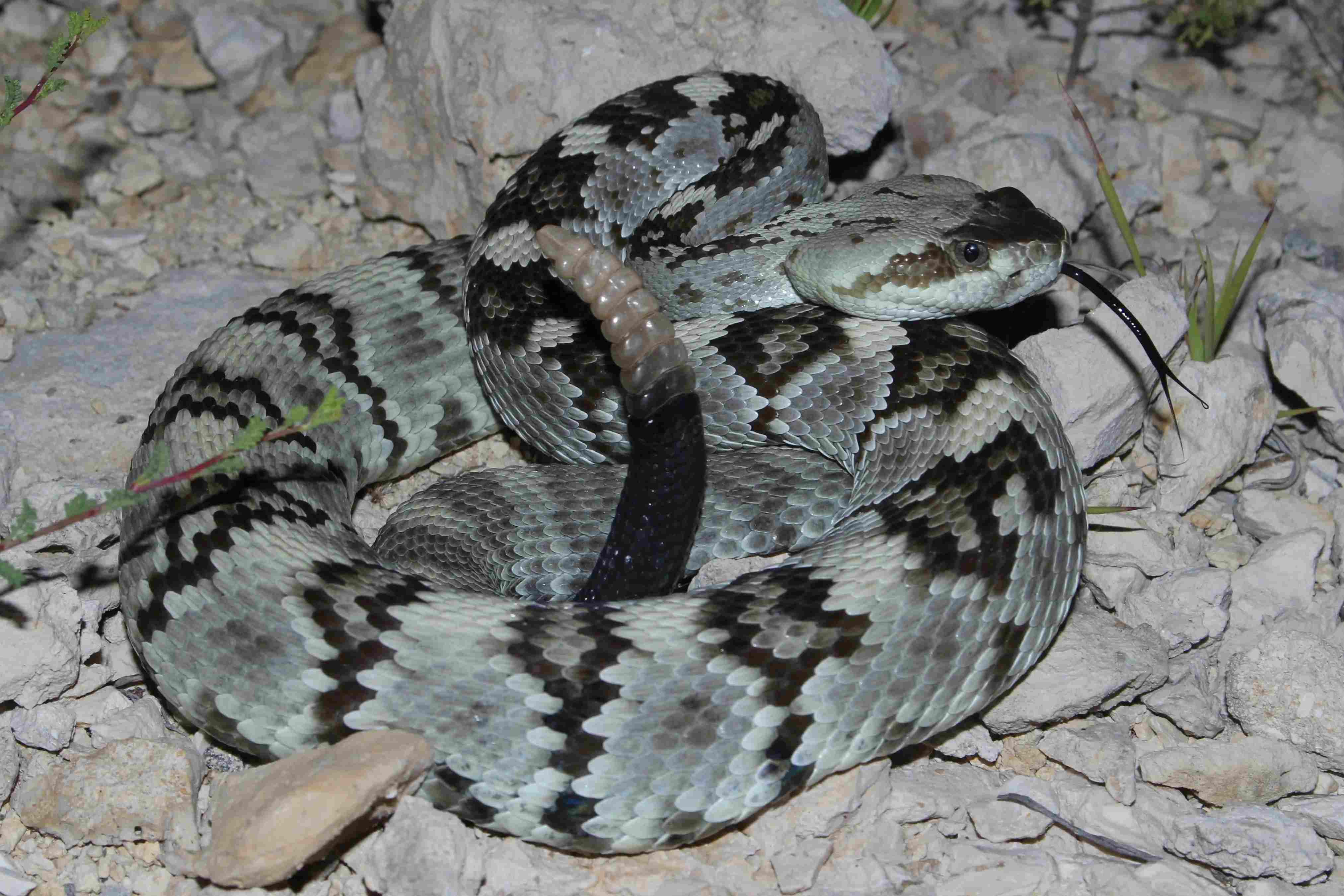
The black tailed rattlesnake is a fascinating and mysterious reptile that inhabits various regions of North America. With its distinctive black tail and venomous bite, it has captured the attention of nature enthusiasts and researchers alike. In this article, we will explore 20 interesting facts about the black tailed rattlesnake, shedding light on its behavior, habitat, and unique adaptations. From its specialized rattling mechanism to its role in the ecosystem, these facts will offer a comprehensive understanding of this remarkable species. So, if you’re ready to delve into the world of the black tailed rattlesnake and uncover its secrets, let’s get started!
Key Takeaways:
- The Black Tailed Rattlesnake is a venomous predator with a unique hunting technique, using its heat-sensing pits and rattling tail to catch prey. It plays a vital role in maintaining a balanced ecosystem by controlling rodent populations.
- Black Tailed Rattlesnakes are not aggressive unless threatened and are important cultural symbols for Native American tribes. They have adapted to survive in arid climates and are protected under conservation laws due to habitat loss and illegal collection.
The Black Tailed Rattlesnake is a venomous pit viper.
The Black Tailed Rattlesnake, also known as the Crotalus molossus, is a highly venomous pit viper species found in the southwestern United States and northern Mexico. It is known for its distinctive black tail, which gives it its common name.
They can grow up to 4 feet in length.
Adult Black Tailed Rattlesnakes can reach lengths of up to 4 feet, with females typically being larger than males. Their size and intimidating appearance make them formidable predators in their habitat.
They have unique markings.
The Black Tailed Rattlesnake has a distinct pattern of light-colored bands along its body, with darker blotches or spots on a lighter background. This pattern helps them blend into their surroundings, providing them with camouflage while hunting or hiding from predators.
They are ambush predators.
The Black Tailed Rattlesnake is an ambush predator, relying on stealth and patience to capture its prey. It typically waits patiently for small mammals, lizards, or birds to come within striking distance before delivering a venomous bite.
They have heat-sensitive pits.
Black Tailed Rattlesnakes have specialized heat-sensing organs called pits, located on the sides of their faces. These pits allow them to detect the infrared radiation emitted by warm-blooded prey, aiding in their hunting efforts.
They use their rattles as a warning signal.
One of the most iconic characteristics of the Black Tailed Rattlesnake is its rattling tail. When threatened, it will rapidly vibrate its specialized tail segments, producing a distinctive rattling sound as a warning to potential predators or intruders.
Their venom is potent.
The venom of the Black Tailed Rattlesnake is highly potent and primarily used to immobilize prey. It contains a mixture of proteins and enzymes that can cause severe damage to the nervous system, leading to paralysis or even death in prey animals.
They are essential to the ecosystem.
As predators, Black Tailed Rattlesnakes play a crucial role in the ecosystem by controlling populations of rodents and other small mammals. By keeping these populations in check, they help maintain a balanced and healthy ecosystem.
They have a unique reproductive system.
Black Tailed Rattlesnakes exhibit a reproductive strategy known as viviparity, where the females give live birth to fully-formed offspring. This adaptation allows for increased survival rates for the newborn snakes.
They are solitary creatures.
Black Tailed Rattlesnakes are usually solitary animals, preferring to spend their time alone in their preferred habitat. However, during the mating season, multiple males may pursue a female, leading to competition and potential conflict.
They hibernate during winter.
During the colder months, Black Tailed Rattlesnakes hibernate in underground dens to conserve energy. They gather together in these dens, known as hibernacula, which provide protection from the harsh winter conditions.
They are found in various habitats.
Black Tailed Rattlesnakes can be found in a range of habitats, including deserts, grasslands, rocky areas, and even woodland edges. This adaptability allows them to thrive in diverse environments with different prey availability.
They have a lifespan of around 10-20 years.
The average lifespan of a Black Tailed Rattlesnake is around 10-20 years. However, factors such as predation, availability of food, and habitat quality can greatly impact their longevity.
They have a specialized hunting technique.
When hunting, Black Tailed Rattlesnakes employ a hunting technique known as “ambush foraging.” They locate a favorable ambush site, often near trails or small mammal burrows, and patiently wait for unsuspecting prey to pass by.
They shed their skin regularly.
Like other reptiles, Black Tailed Rattlesnakes periodically shed their skin as they grow. This process, known as ecdysis, allows them to remove any old or damaged skin and reveal a fresh, vibrant appearance.
They have pits in their scales.
Black Tailed Rattlesnakes have specialized pits located on their scales called pit organs. These sensory organs are sensitive to temperature changes and play a crucial role in detecting and tracking warm-blooded prey.
They are important cultural symbols.
The Black Tailed Rattlesnake holds cultural significance for many Native American tribes in the southwestern United States. They are often represented in artwork, mythology, and traditional ceremonies, symbolizing both danger and respect.
They have adapted to survive in arid climates.
Black Tailed Rattlesnakes have evolved several adaptations to survive in arid environments. They can tolerate extreme temperatures, conserve water efficiently, and have specialized behaviors to seek shelter during the hottest parts of the day.
They are not aggressive unless threatened.
Contrary to popular belief, Black Tailed Rattlesnakes are generally non-aggressive and prefer to avoid confrontation. They will only strike if they feel threatened or cornered, as a means of self-defense.
They are a protected species.
Due to habitat loss, illegal collection, and other threats, Black Tailed Rattlesnakes are protected under various conservation laws and regulations. It is illegal to harm or capture these snakes without the proper permits.
Conclusion
The Black Tailed Rattlesnake is a fascinating species with many unique characteristics. From its distinctive black tail to its venomous bite, this snake is both intriguing and potentially dangerous. With its specialized adaptations and impressive hunting abilities, it plays a crucial role in maintaining the balance of ecosystems where it resides.
Understanding the behaviors and habits of the Black Tailed Rattlesnake is key to coexisting with this remarkable creature. By respecting its space and taking precautionary measures when in rattlesnake territory, humans and these snakes can peacefully share the natural environment. Remember, education and awareness are vital in fostering a harmonious relationship with wildlife.
FAQs
1. Are Black Tailed Rattlesnakes venomous?
Yes, Black Tailed Rattlesnakes are venomous. Their venom is used to immobilize and kill their prey.
2. How long can a Black Tailed Rattlesnake’s rattle grow?
The rattle of a Black Tailed Rattlesnake can grow up to 10 segments long. It adds a new segment each time the snake sheds its skin.
3. Do Black Tailed Rattlesnakes lay eggs or give live birth?
Black Tailed Rattlesnakes give live birth. They are viviparous, meaning the offspring develop inside the female and are born live.
4. What is the average lifespan of a Black Tailed Rattlesnake?
Black Tailed Rattlesnakes typically live for around 10 to 15 years in the wild.
5. How can I prevent encounters with Black Tailed Rattlesnakes?
To prevent encounters with Black Tailed Rattlesnakes, it is important to always watch where you step, especially in rocky or brushy areas. It’s also essential to be aware of your surroundings and listen for their distinctive rattle.
Was this page helpful?
Our commitment to delivering trustworthy and engaging content is at the heart of what we do. Each fact on our site is contributed by real users like you, bringing a wealth of diverse insights and information. To ensure the highest standards of accuracy and reliability, our dedicated editors meticulously review each submission. This process guarantees that the facts we share are not only fascinating but also credible. Trust in our commitment to quality and authenticity as you explore and learn with us.


